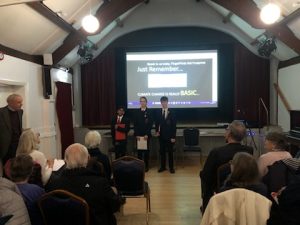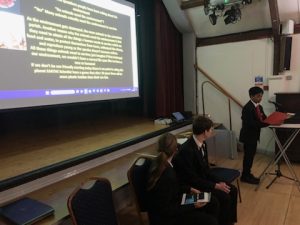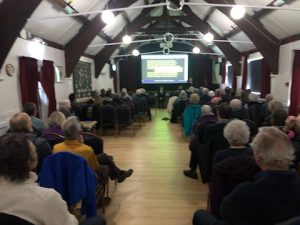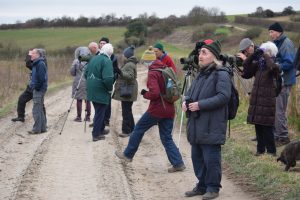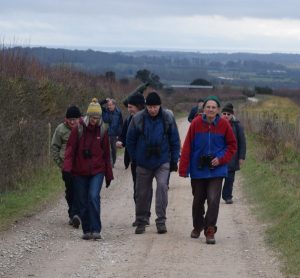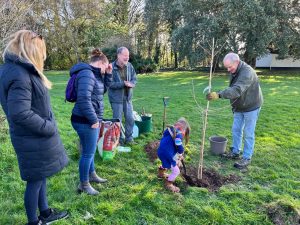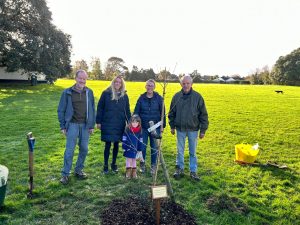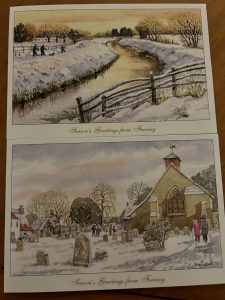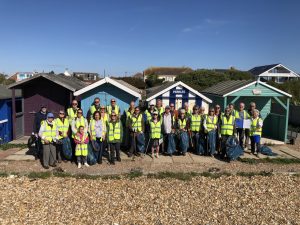Alex New the Plant Heritage Curator at Highdown Gardens came along to the Group’s April meeting not only to educate members regarding the wonderful collection of rare plants adorning the Gardens, but also to bring to life the fascinating history of this valued and unique chalk garden.
To an audience of 90 members and visitors Alex conveyed his extensive knowledge and demonstrating a keen sense of humour enthralled the Group with the colourful story of the many people who have contributed to this special place over the years.
In 1909 aristocratic banker Frederick Stern moved to the area and rented Highdown Tower with the intention of breeding racehorses. Stern married a lady called Sybil and the couple shared their time between the South Coast retreat and London. Soon Stern developed a passion, which eventually became an obsession, collecting plant specimens from worldwide destinations. Stern also commandeered other plant hunters such as George Forrest, Dora Stafford and Frank Kingdon-Ward to name but a few.
Whilst creating many hybrid flowers the couple became expert plant propagators and Stern became a member of the RHS and Sybil a suffragist activist for the Liberal Party. The fame of Highdown Gardens grew and by the 1930s botanists, plant hunters, gardeners, scientists and indeed the Royal Family were regular visitors.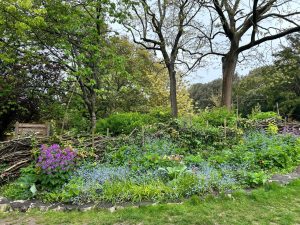
During WW2 Stern became Group Commander of the West Sussex Home Guard and promoted to Colonel. Sybil was awarded the Victoria Medal of Honour (Horticulture). With his vast knowledge of plants Stern became interested in counting plant chromosomes and began learning techniques from scientists and eventually converting the cellar at Highdown into a laboratory.
In 1956 Stern was knighted for his services to horticulture and in 1960 published a much acclaimed book entitled ‘A Chalk Garden’ – passing away in 1967 aged 83 years. In 1968 Lady Sybil donated Highdown Gardens to Worthing Town Council but died just four years later. The couple’s legacy is the beautiful Chalk Garden at Highdown that can still be enjoyed by visitors today.
In recent years more than £800,000 of lottery funding has enabled staff to make significant improvements enabling garden experts to catalogue, preserve and propagate the hundreds of rare species that grow in this important Garden. The welcome addition of a new visitor’s centre and walkways have all been created, along with a wheelchair accessible sensory garden.
A short AGM followed a break for refreshments with Chairman David Bettiss giving thanks to Michael Brown, the Group’s former Membership Secretary, for his significant contribution who has now sadly resigned from the committee due to poor health. The remaining committee members were re-elected unopposed, with Peter Coe being elected as a new member.
A Nature Notes session presented by Graham Tuppen followed the AGM with news of Common Whitethroats, Moorhens, a Water Vole and a Mallard Duck’s nest (just above the water level) being spotted along the banks of the Rife. The first Swallows of the year had been seen. A white Starling was spotted amongst a flock foraging near the Rife (this is caused by of lack of melanin – a pigment responsible for black and grey colouring in the feathers). Graham informed the audience that the Bluebells were all out in Patching Woods and a Nature Walk was planned there on 4th May.
To conclude the meeting Ed Miller was able to advise members that planning applications for a property at The Grove had been refused permission by Arun DC together with ‘Haystacks’ in Sea Lane. The Group were jubilant to hear that the housing estates proposed at Kingston Lane, Kingston and also at Highdown Vineyard had also been refused.

